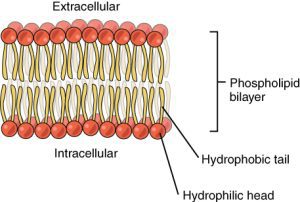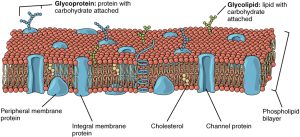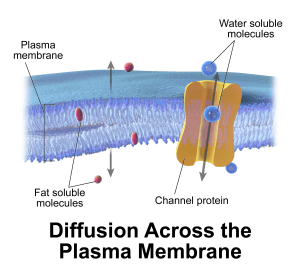Understanding Plasma Membranes: Structure and Function
Plasma membranes are essential components of all cells, acting as gatekeepers that control what enters and exits the cell. These structures play a significant role in maintaining cellular integrity and allowing communication with the external environment. Let’s explore what makes the plasma membrane so vital.
Structure of Plasma Membranes
The plasma membrane is composed of a phospholipid bilayer. Each phospholipid has two components: a hydrophilic head (water-loving) and a hydrophobic tail (water-hating). The hydrophilic heads face outward toward the watery environment both inside and outside the cell, while the hydrophobic tails point inward, away from water. This unique arrangement ensures the membrane is both flexible and selective in what it allows across.


Components of the Plasma Membrane
Embedded within this bilayer are various proteins and other molecules, each with its own role:
Phospholipids: Form the bilayer and create a selectively permeable barrier.
Embedded Proteins: The proteins embedded in the membrane have unique properties depending on their amino acid composition. Hydrophilic parts of these proteins interact with the hydrophilic heads, while the hydrophobic parts stay nestled with the fatty acid tails.
Glycoproteins and Glycolipids: These are carbohydrate-containing molecules that help with cell signaling and cell recognition, as well as assist in attaching the cell to other structures.
Cholesterol and Steroids: These molecules contribute to the fluidity and stability of the plasma membrane.
The Fluid Mosaic Model
The plasma membrane is often described by the Fluid Mosaic Model, which conveys two main concepts:
Fluidity: The phospholipids and proteins can move laterally within the layer, which makes the membrane flexible and adaptable to changes.
Mosaic Nature: The proteins, glycoproteins, and glycolipids are arranged in a pattern, giving the appearance of a mosaic. These components serve diverse functions essential for the cell’s survival and interaction.
Functions of Embedded Proteins
Transmembrane proteins are a critical part of the plasma membrane. They perform several key roles:
Adhesion Proteins: Form junctions between cells, helping them stick together.
Receptor Proteins: Receive chemical signals like hormones, acting as docking sites that relay messages into the cell.
Transport Proteins: Use ATP to actively transport substances across the membrane.
Channel Proteins: Form channels to facilitate the passive movement of substances like ions.
Cell Surface Markers: Act as ID cards, helping cells recognize each other.

Membrane Permeability
The plasma membrane’s selective permeability ensures that only specific substances can move in and out of the cell. The hydrophobic tails play a crucial role in this, allowing some molecules, like small nonpolar molecules (e.g., oxygen and carbon dioxide), to pass through freely while restricting polar or charged substances.
Small polar molecules, like water, may pass through in small amounts, but larger or charged molecules need assistance from transport proteins. This selective nature is key to maintaining the cell’s internal environment and regulating the flow of nutrients and waste.
Conclusion
The plasma membrane is more than just a protective barrier; it is an essential structure that enables the cell to function efficiently. Its composition allows for selective permeability, communication, and interaction with the environment, ensuring that the cell remains adaptable and responsive to external changes. Understanding the plasma membrane is fundamental to comprehending many biological processes, from nutrient absorption to cellular communication.
Ready to learn more about cell structures and how they work? Check out our AP Biology Unit 2 replays or explore more posts on cellular functions right here on Slyacademy.com.
Quiz Yourself
What are the two main components of the phospholipid bilayer in a plasma membrane?
Hydrophilic heads and hydrophobic tails
Glycoproteins and glycolipids
Adhesion proteins and transport proteins
Non-polar molecules and polar molecules
Answer: Hydrophilic heads and hydrophobic tails








